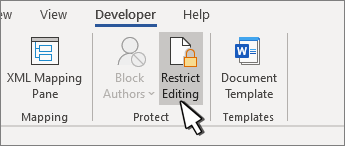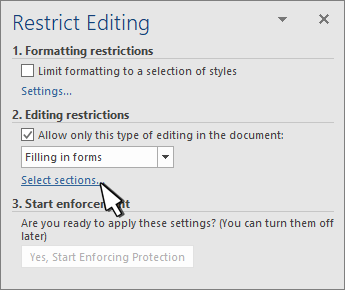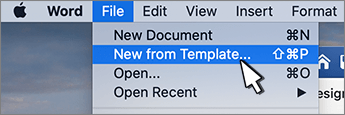
In Word, you can create a form that others can fill out and save or print. To do this, you will start with baseline content in a document, potentially via a form template. Then you can add content controls for elements such as check boxes, text boxes, date pickers, and drop-down lists. Optionally, these content controls can be linked to database information.
Following are the recommended action steps in sequence.
In Word, be sure you have the Developer tab displayed in the ribbon.
(See how here: Show the developer tab.)
You can start with a template or just start from scratch with a blank document.
Start with a form templateGo to the Developer tab Controls section where you can choose controls to add to your document or form. Hover over any icon therein to see what control type it represents. The various control types are described below. You can set properties on a control once it has been inserted.
To delete a content control, right-click it, then select Remove content control in the pop-up menu.
Note: You can print a form that was created via content controls. However, the boxes around the content controls will not print.
Insert a text controlThe rich text content control enables users to format text (e.g., bold, italic) and type multiple paragraphs. To limit these capabilities, use the plain text content control.


or Plain Text Content Control
To learn about setting specific properties on these controls, see Set or change properties for content controls.
Insert a picture controlA picture control is most often used for templates, but you can also add a picture control to a form.

To learn about setting specific properties on these controls, see Set or change properties for content controls.
Insert a building block controlUse a building block control when you want users to choose a specific block of text. These are helpful when you need to add different boilerplate text depending on the document's specific purpose. You can create rich text content controls for each version of the boilerplate text, and then use a building block control as the container for the rich text content controls.


. Select Developer and content controls for the building block.
To learn about setting specific properties on these controls, see Set or change properties for content controls.
Insert a combo box or a drop-down listIn a combo box, users can select from a list of choices that you provide or they can type in their own information. In a drop-down list, users can only select from the list of choices.


or Drop-Down List Content Control
Note: If you select the Contents cannot be edited check box, users won’t be able to click a choice. Insert a date picker
To learn about setting specific properties on these controls, see Set or change properties for content controls.
Insert a check box
To learn about setting specific properties on these controls, see Set or change properties for content controls.
Use the legacy form controlsLegacy form controls are for compatibility with older versions of Word and consist of legacy form and Active X controls.

Each content control has properties that you can set or change. For example, the Date Picker control offers options for the format you want to use to display the date.

If you want to limit how much others can edit or format a form, use the Restrict Editing command:


After selecting restrictions, select Yes, Start Enforcing Protection.
Advanced Tip:
If you want to protect only parts of the document, separate the document into sections and only protect the sections you want.
To do this, choose Select Sections in the Restrict Editing panel. For more info on sections, see Insert a section break.

If the developer tab isn't displayed in the ribbon, see Show the Developer tab.
To create a form in Word that others can fill out, start with a template or document and add content controls. Content controls include things like check boxes, text boxes, and drop-down lists. If you’re familiar with databases, these content controls can even be linked to data.
Start with a form template

Go to Developer, and then choose the controls that you want to add to the document or form. To remove a content control, select the control and press Delete. You can set Options on controls once inserted. From Options, you can add entry and exit macros to run when users interact with the controls, as well as list items for combo boxes, .
Adding content controls to your form
Options let you set common settings, as well as control specific settings. Select a control and then select Options to set up or make changes.
